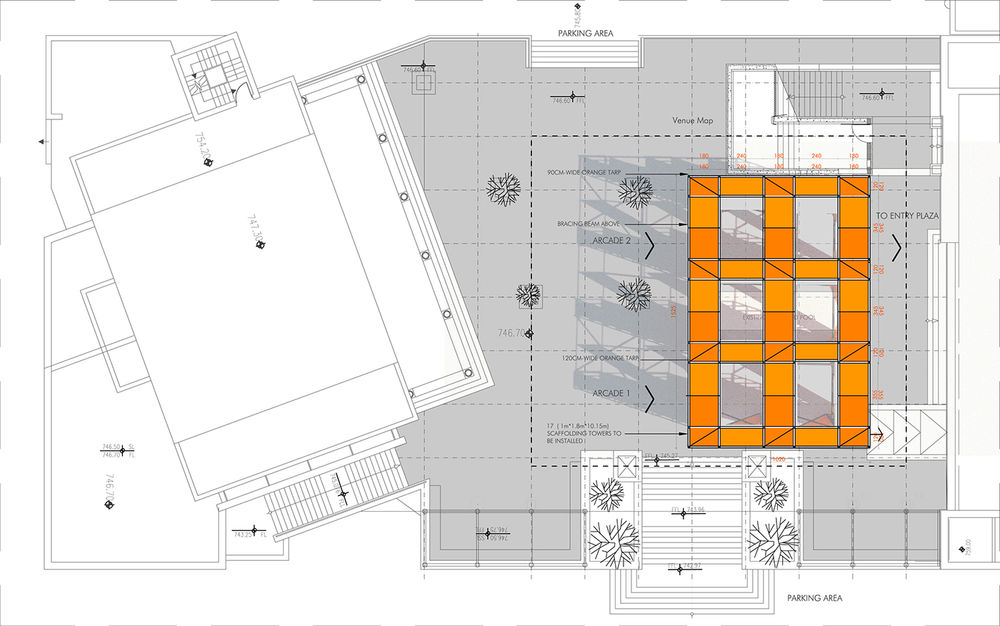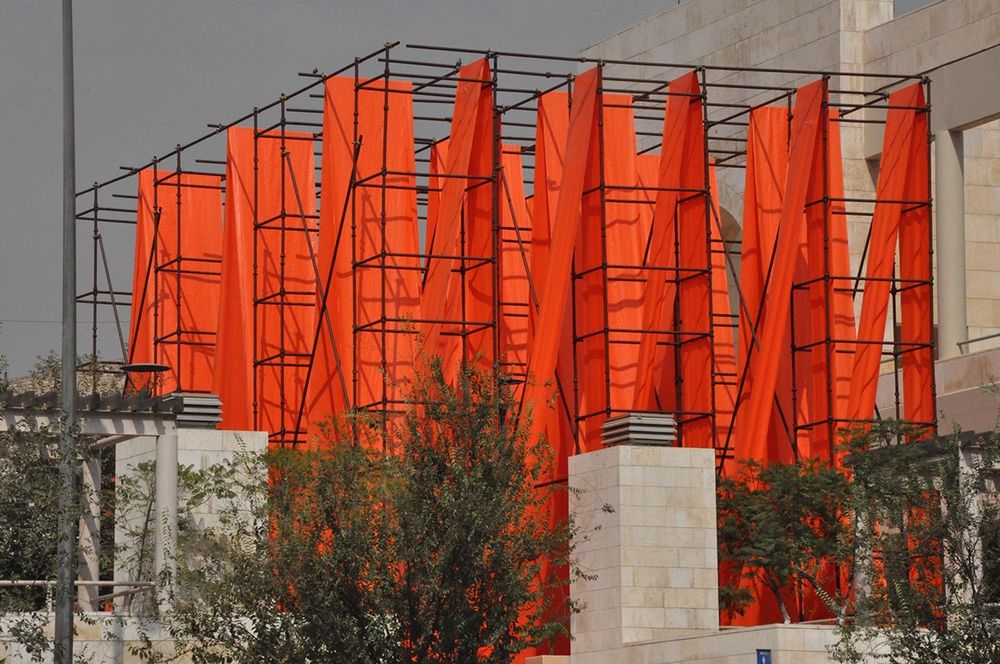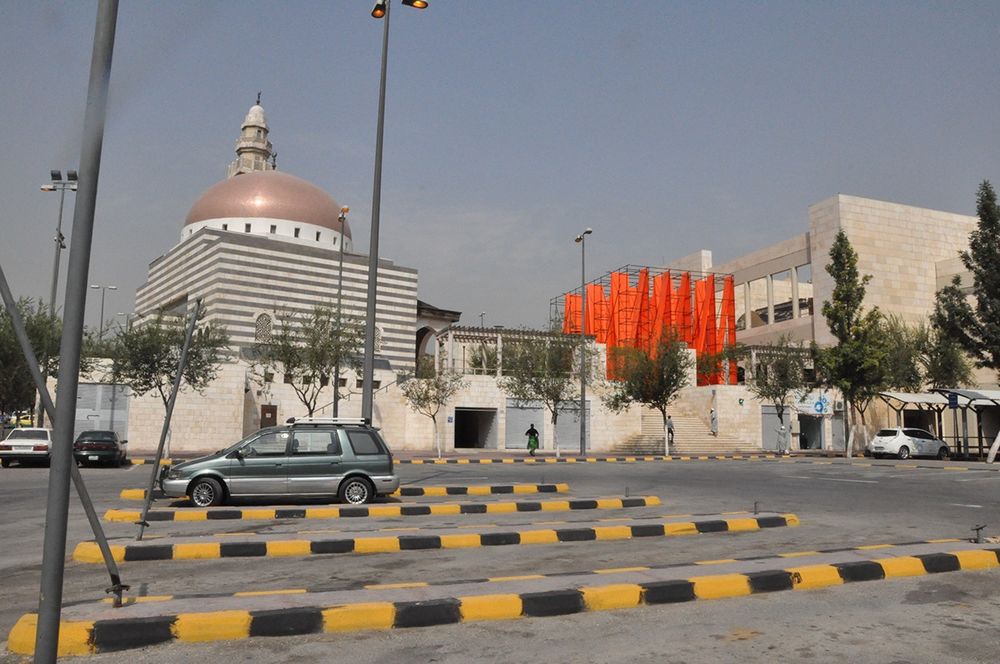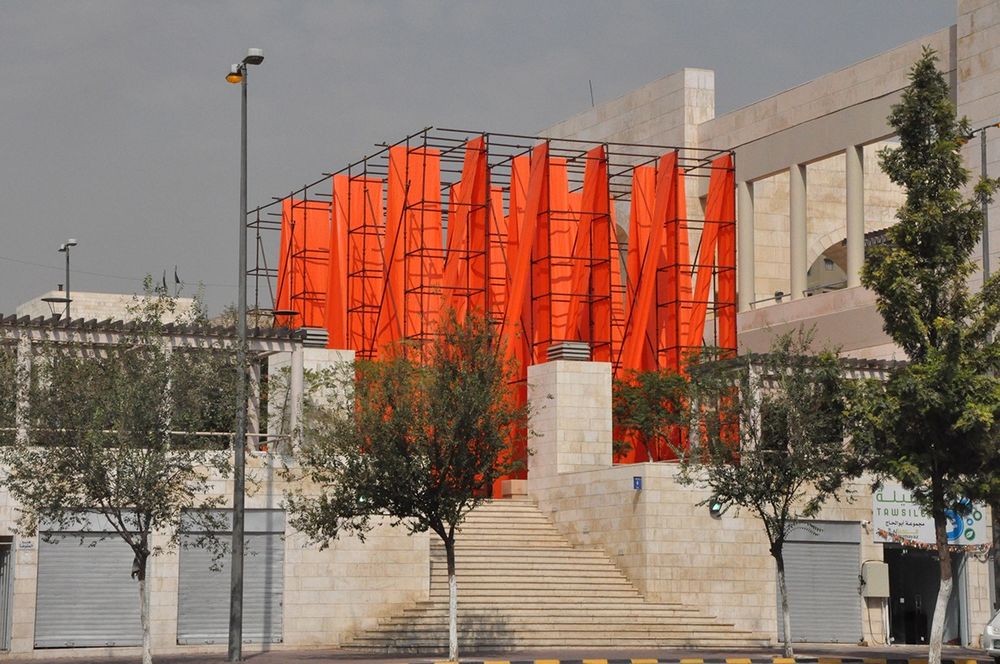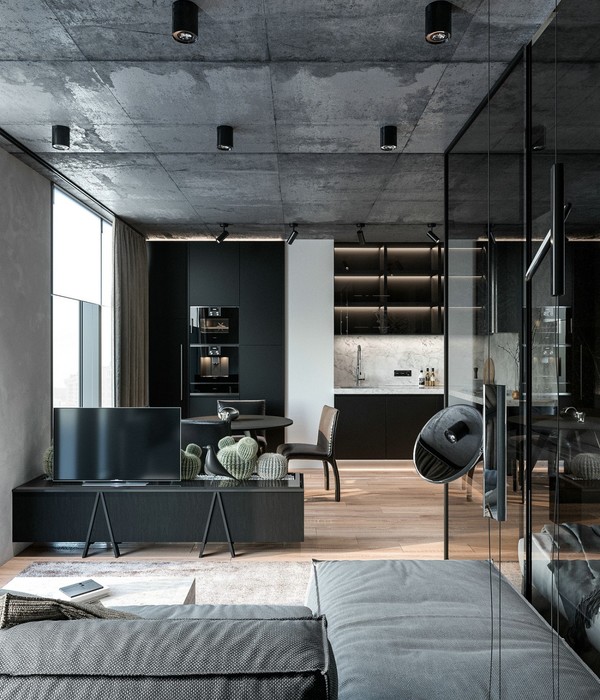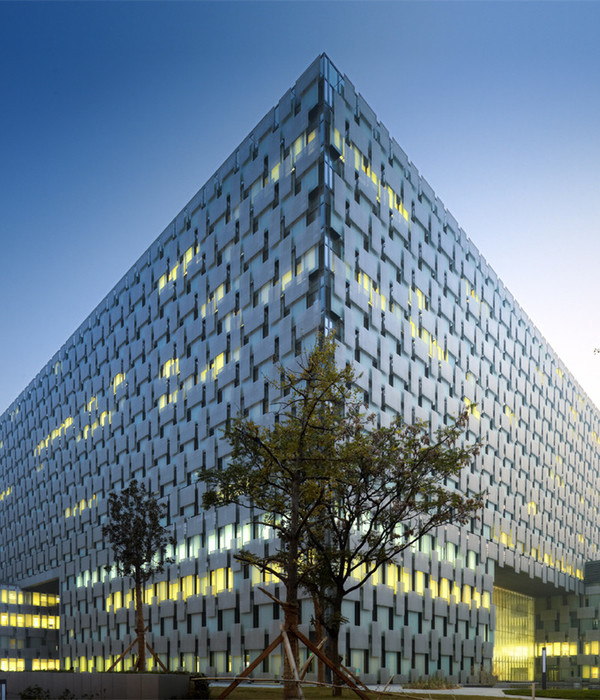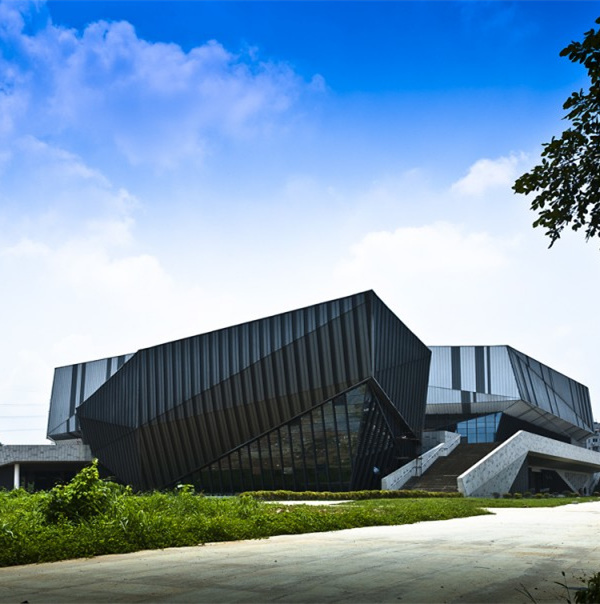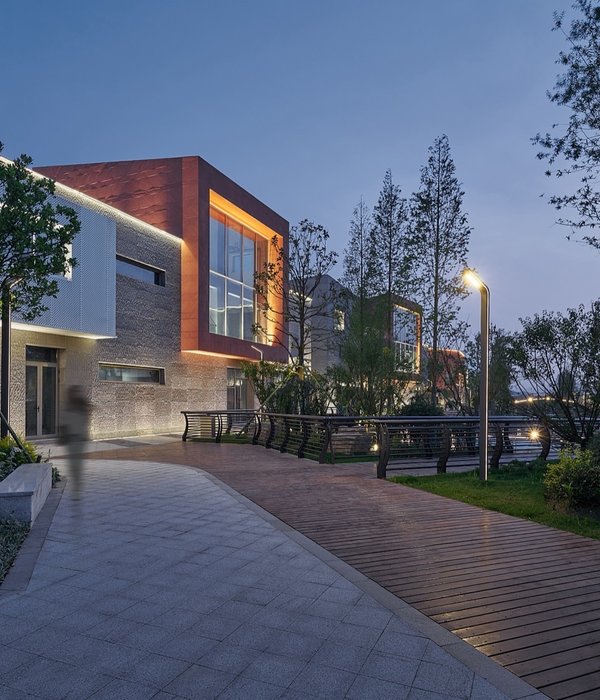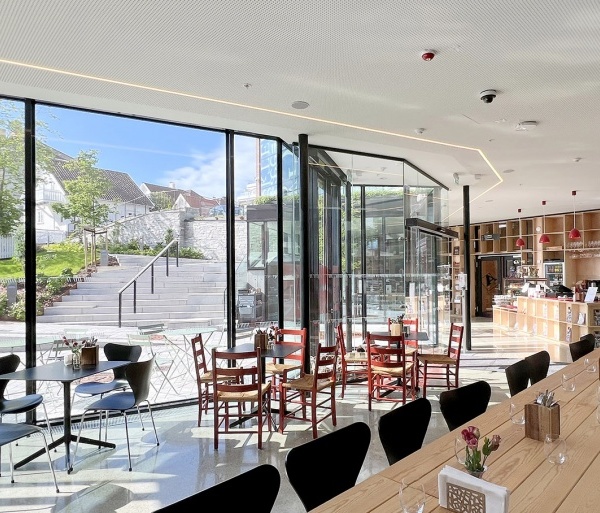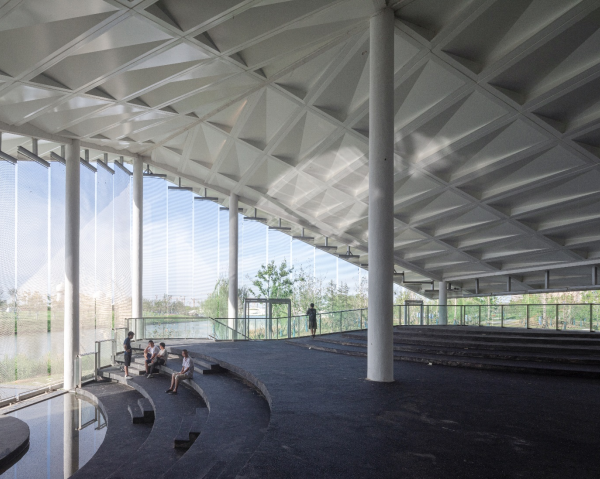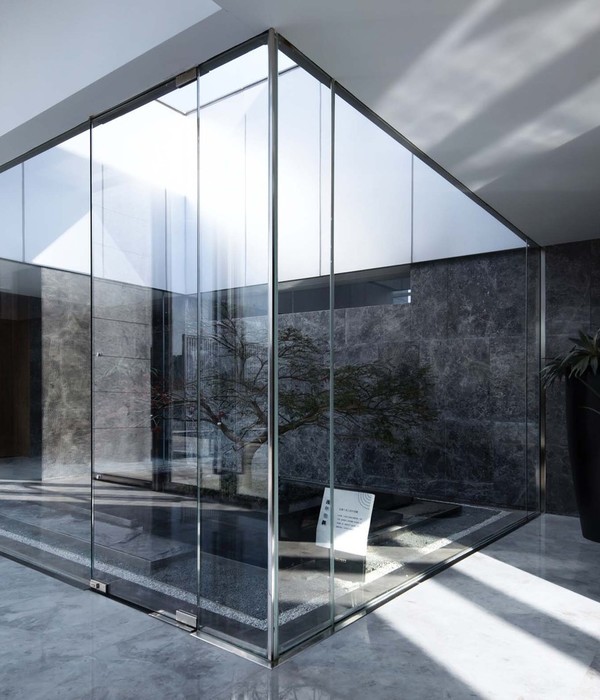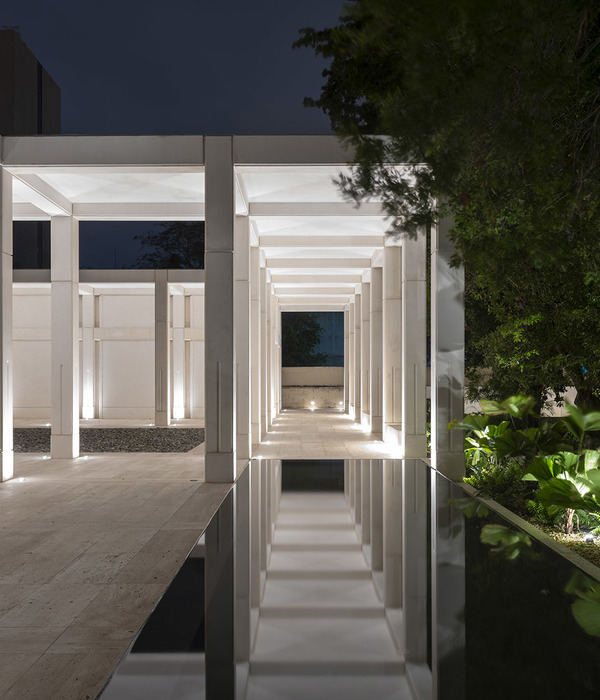废弃停车场变身高贵艺术区
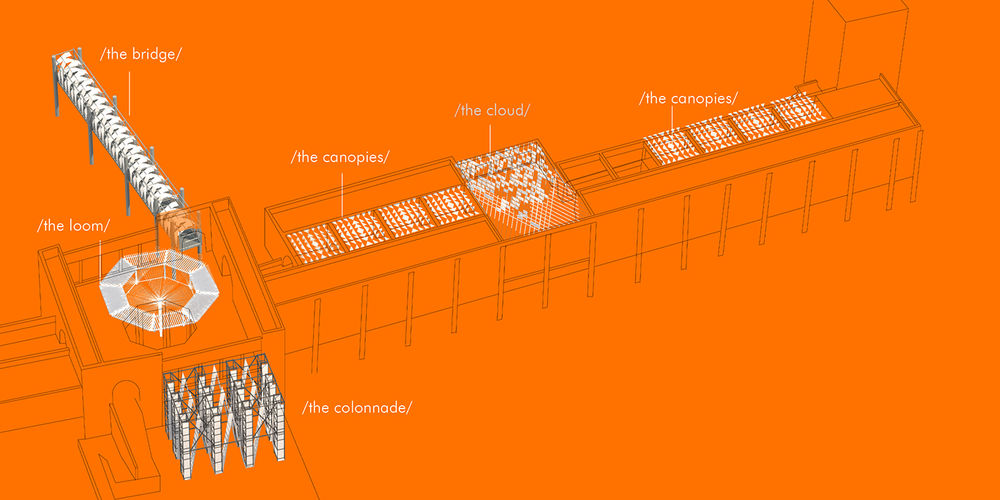

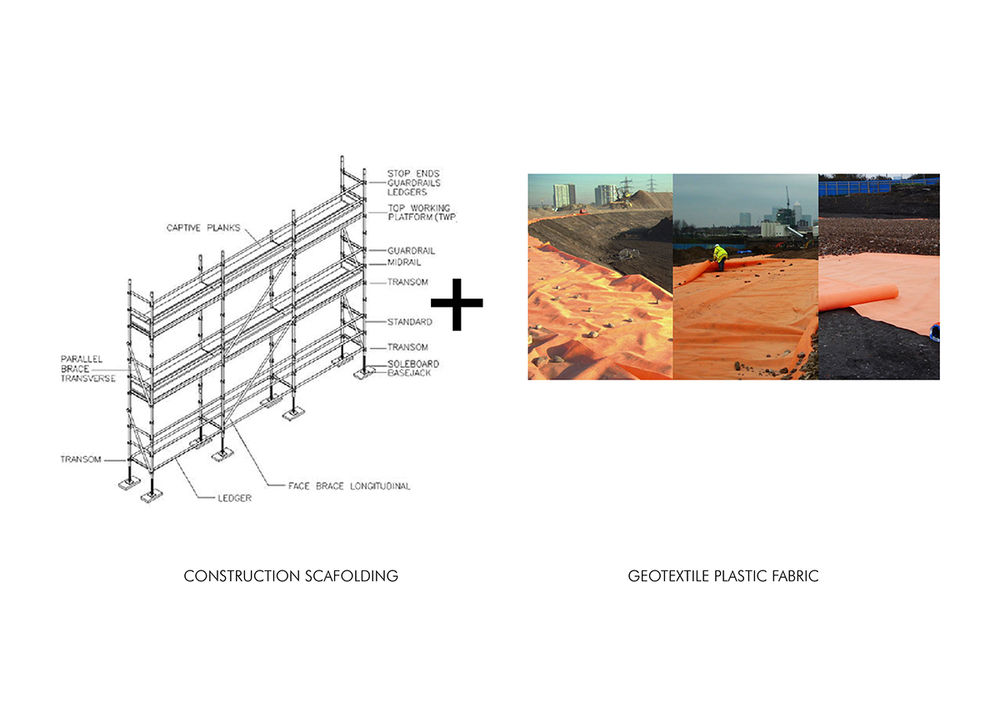
The Colonnade:
The Colonnade, demarks the entry for the Craft District, connecting the public space of the empty parking lots to the private body of the abandoned structure. The installation is a temporary threshold erected to create questions and build rumors, in a public space under constant transformation, relocation and interruption. A structure of transience is built using 17 scaffolding towers arranged in a form of a grid placed in the middle of the public empty plaza of the terminal. The scaffolding pillars are spaced out to create a colonnade; a traditional architectural symbol of power and authority built in a fragile ephemeral material.
The gateways between the pillars are triangular arches generated by weaving the pillars together with fabric; a 700m long orange plastic fabric usually used to veil construction sites, a material that the public are used to seeing around the city, yet employed in a different way to create the triangular pointed archways, that also mimics indirectly the pointed arches of "Quraish Street" the main route which leads down to the Raghadan Terminal.
الرواق
عند الدخول إلى "حي الحرف"، تظهر الأعمدة التي تصل ما بين المساحة العامة ومناطق اصطفاف السيّارات الفارغة وبين جسم البناء المهجور. فكعتبة مؤقّتة، تثير هذه الأعمدة التساؤلات حول المساحات المتروكه بينها: الإعاقة وإعادة الموضعة المتأصّلة في أي نوع من التحوّل. تم تشييد البناء العابر باستخدام 17 سقّالة رتّبت على شكل شبكة ووضعت في منتصف الساحة الخالية.
وضعت هذه الأعمدة بهذا الشكل المتباعد عن بعضها لخلق رمز معماري تقليدي للقوة مع المواد الهشّة. وبدورها، تشكّل المخارج بين الأعمدة شكل أقواس مثلّثة تولّدها دمج الأعمدة معاً بقطعة طويلة من قماش القنّب البرتقالي يبلغ طولها 700 متر، والتي عادة ما تستخدم كمادة صناعيّة لتغطية مواقع البناء. توظّف هذه الأعمدة، عبر الاستيلاء على المواد التي تعوّد الناس على رؤيتها في سياقات مختلفة، لخلق قناطر تحاكي تلك الموجودة في شارع قريش الذي يؤدّي إلى المجمّع.
